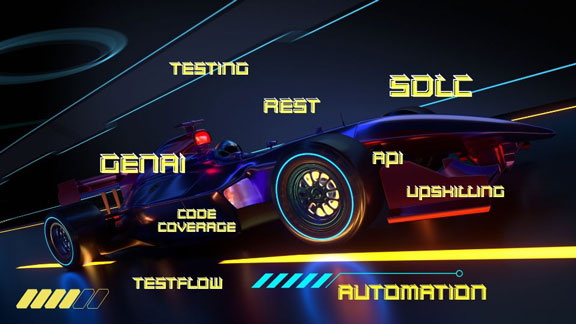Exploring real-time communication in Vue.js with Socket.IO

Posted By
Anamol Soman

In the fast-paced world of web development, creating applications that offer real-time features is no longer just a luxury—it's a necessity. Whether it's facilitating live chat, collaborative editing, or delivering instant updates, the demand for bidirectional communication between clients and servers is more prevalent than ever. This is where Socket.IO, a powerful library for real-time communication, comes into play. In this blog post, we'll embark on a journey to seamlessly integrate Socket.IO with Vue.js, creating a dynamic and responsive real-time application.
What is Socket.IO?
Before we dive into the implementation details, let's take a moment to understand what Socket.IO is and why it's such a game-changer. Socket.IO is a JavaScript library that facilitates real-time, bidirectional, and event-driven communication between web clients and servers. Its versatility ensures that it works seamlessly across various platforms, browsers, and devices, providing a robust foundation for creating real-time user experiences.
Here's why Socket.IO is a game changer
- Real-time updates: Without Socket.io, applications would need to constantly refresh the page to get new information. Soc33.io enables instant updates, making applications feel more dynamic and responsive. This is ideal for things like chat apps, collaborative editing tools, or live dashboards.
- Bidirectional communication: Both the client and server can send and receive data. This allows for more interactive experiences. Imagine a multiplayer game where players' actions are sent to the server and then relayed to all other players in real-time.
- Flexibility: Socket.io works across different browsers and devices and can handle different connection methods. This makes it a versatile tool for web developers.
Steps to integrate Socket.IO with Vue.js
Step 1: Prepare the Vue.js Project
Before we delve into Socket.IO, ensure the proper environment is set up. If you're new to Vue.js or need a refresher, it's always good to have a basic understanding of Vue.js, Node.js, and npm installed on your machine. Once your Vue.js project is running, we're ready to introduce real-time magic.
Step 2: Install Socket.IO
The first step is to install the socket.io-client package in our Vue.js project. This client library allows us to establish a connection with the Socket.IO server seamlessly. Open your terminal and execute the following command:
npm install socket.io-client
Step 3: Set up the Socket.IO server
Now, let's create a simple Socket.IO server using Node.js. If you already have a server, fantastic! You can effortlessly integrate Socket.IO into your existing setup. If not, don't worry—we'll guide you through setting up a basic server. Create a new file (perhaps named server.js) and include the following content:
javascriptCopy code// server.jsconst express = require('express'); const http = require('http');const socketIO = require('socket.io');
const app = express();const server = http.createServer(app);const io = socketIO(server);
io.on('connection', (socket) => { console.log('A user connected');
// Handle disconnection socket.on('disconnect', () => { console.log('User disconnected'); }); });
const PORT = process.env.PORT || 3000; server.listen(PORT, () => { console.log(`Server running on port ${PORT}`); });
In this server setup, we're leveraging the Express framework and the socket.io library to handle WebSocket connections. The server listens for connection events and logs when a user connects or disconnects.
Step 4: Vue.js meets Socket.IO
Now comes the exciting part—integrating Socket.IO into our Vue.js application. Open a Vue component file (perhaps named MyComponent.vue) and incorporate the following code:
<template> <div> <h1>Real-Time Vue.js App</h1> <input v-model="message" placeholder="Type a message" /> <button @click="sendMessage">Send</button> <ul> <li v-for="(msg, index) in messages" :key="index">{{ msg }}</li> </ul> </div></template><script>import io from 'socket.io-client';
export default {
data() {
return {
message: '',
messages: [],
}; }, created() {
// Connect to the Socket.IO server const socket = io('http://localhost:3000');
// Handle connection and disconnection events socket.on('connect', () => {
console.log('Connected to Socket.IO server');
});
socket.on('disconnect', () => {
console.log('Disconnected from Socket.IO server');
});
// Listen for 'message' event from the server socket.on('message', (data) => {
this.messages.push(data);
}); }, methods: {
sendMessage() {
// Connect to the Socket.IO server
const socket = io('http://localhost:3000');
// Emit 'message' event to the server
socket.emit('message', this.message);
// Clear the input field
this.message = '';
},
},
};
</script>
In this Vue component, we've crafted a simple user interface with an input field for typing messages, a button to send messages, and a list to display received messages. The io function from socket.io-client is pivotal in connecting to the Socket.IO server.
Discover techniques for optimizing form handling in React applications
Step 5: Embracing real-time interactions
With the setup complete, let's investigate how events are emitted and received using Socket.IO. In this Vue component:
Connecting to the Socket.IO server
We establish a connection to the Socket.IO server in the created lifecycle hook. We take the opportunity to log a friendly message when the connection is established or when it experiences a temporary disconnect.
javascriptCopy codecreated() {
// Connect to the Socket.IO server const socket = io('http://localhost:3000');
// Handle connection and disconnection events socket.on('connect', () => {
console.log('Connected to Socket.IO server');
});
socket.on('disconnect', () => {
console.log('Disconnected from Socket.IO server');
});
},
Listening for 'message' events
We utilize socket.on('message', ...) to attentively listen for incoming messages from the server. When a message event is received, the data is gracefully added to the messages array, and like magic, the user interface updates accordingly.
javascriptCopy code// Listen for 'message' event from the serversocket.on('message', (data) => {
this.messages.push(data);
});
Emitting 'message' events
The sendMessage method takes center stage when the user clicks the "Send" button. It connects to the Socket.IO server and emits a 'message' event containing the input field's content.
javascriptCopy codesendMessage() {
// Connect to the Socket.IO server const socket = io('http://localhost:3000');
// Emit 'message' event to the server socket.emit('message', this.message);
// Clear the input field this.message = '';
},
Unleash the power of real-time with Socket.IO integration
By seamlessly integrating Socket.IO with Vue.js, you've opened the door to possibilities for creating dynamic, interactive, and real-time applications. This example is a foundational exploration, and the journey continues. Socket.IO offers many features, such as rooms, namespaces, and event acknowledgement, waiting to be discovered as you tailor real-time capabilities to your specific use case.
As you continue exploring, consider the impact real-time interactions can have on your applications. From live updates to collaborative editing, the possibilities are as vast as your imagination.
Socket.IO is more than a library—it's a catalyst for transforming static applications into living, breathing experiences. The integration with Vue.js provides a seamless synergy that empowers developers to craft applications that respond in real-time to user interactions.
Related Blogs




















